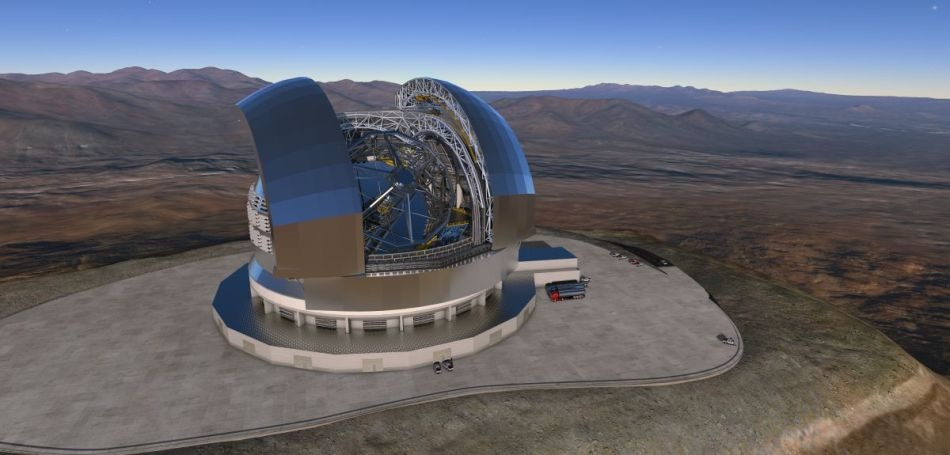May 29 2017
Scientists are a step closer to understanding the inner-workings of the universe following the laying of the first stone, and construction starting on the world's largest optical and infrared telescope.
 Credit: University of Oxford
Credit: University of Oxford
With a main mirror 39 metres in diameter, the Extremely Large Telescope (ELT), is going to be, as its name suggests, enormous. Unlike any other before it, ELT is also designed to be an adaptive telescope and has the ability to correct atmospheric turbulence, taking telescope engineering to another level.
To mark the construction's milestone, a ceremony was held at ESO's Paranal residencia in northern Chile, close to the site of the future giant telescope which will be on top of Cerro Armazones, a 3046-metre peak mountain.
Among many other representatives from industry, the significance of the project was highlighted by the attendance of the Director General of ESO, Tim de Zeeuw, and President of the Republic of Chile, Michelle Bachelet Jeria.
The ELT is being built by the European Southern Observatory (ESO), an international collaboration supported by the UK's Science and Technology Facilities Council (STFC). Oxford University scientists are playing a key role in the project, and are responsible for the design and construction of its spectrograph; 'HARMONI', an instrument designed to simultaneously take 4000 images, each in a slightly different colour. The visible and near-infrared instrument will harness the telescope's adaptive optics to provide extremely sharp images.
'HARMONI' will enable scientists to form a more detailed picture of the formation and evolution of objects in the Universe. Supporting researchers to view everything from the planets in our own solar system and stars in our own and nearby galaxies with unprecedented depth and precision, to the formation and evolution of distant galaxies that have never been observed before.
Niranjan Thatte, Principal Investigator for 'HARMONI' and Professor of Astrophysics at Oxford's Department of Physics, said: 'For me, the ELT represents a big leap forward in capability, and that means that we will use it to find many interesting things about the Universe that we have no knowledge of today.
'It is the element of 'exploring the unknown' that most excites me about the ELT. It will be an engineering feat, and its sheer size and light grasp will dwarf all other telescopes that we have built to date.'
A time capsule, created by members of the ESO team and sealed at the event, will serve as a lasting memory of the research and the scale of ambition and commitment behind it. Contents include a copy of a book describing the original scientific aims of the telescope, images of the staff that have and will play a role in its construction and a poster of an ELT visualisation. The cover of the time capsule is engraved with a hexagon made of Zerodur©, a one-fifth scale model of one of the ELT's primary mirror segments.
Tim DE Zeeuw, Director General of ESO, said: 'The ELT will produce discoveries that we simply cannot imagine today, and it will surely inspire numerous people around the world to think about science, technology and our place in the Universe. This will bring great benefit to the ESO member states, to Chile, and to the rest of the world.'
The ELT is set for completion in 2024, and as the visualisation images show, it is going to be 'out of this world.'
Source: http://www.ox.ac.uk/